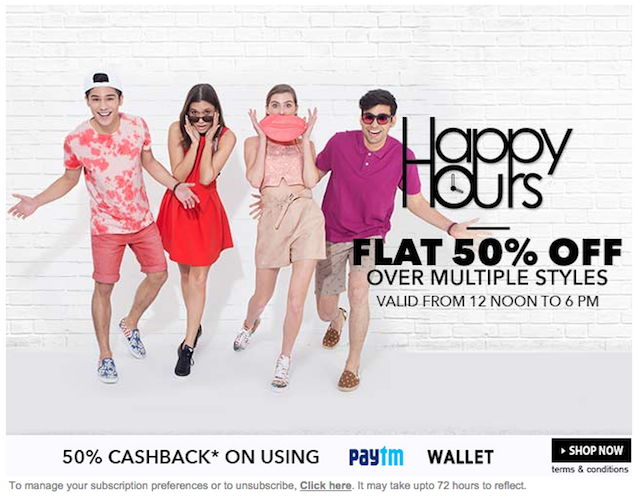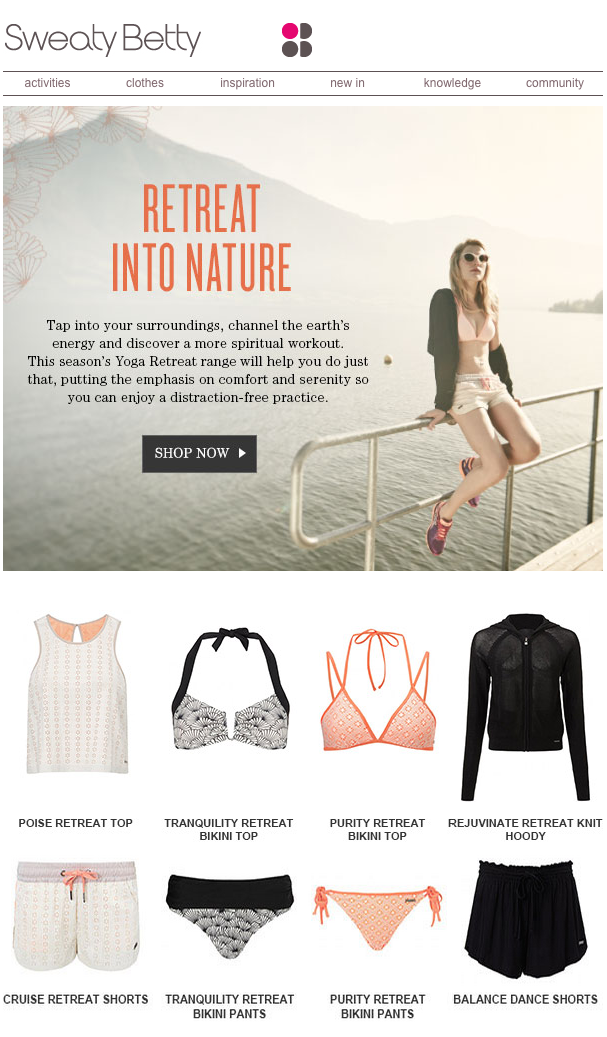 Marcin Kociuba
created
edited
Marcin Kociuba
created
edited
Using email marketing to drive ecommerce sales
Back to list of articlesDo you run an internet store and you’re not sure if the investment in email marketing is worth it? Read on to put all your doubts to rest.
Is email marketing right for your online store?
According to research performed by Custora, email marketing the source of more than 7% of all transactions in online shops, far ahead of social media and banner advertising.

Source: blog.custora.com
So the answer to the question of whether or not email marketing is the desired channel for communication with your customers, the answer is a definite “Yes”!
How do you start using email for you online store?
The key to success and the first step is putting a sign up form for your newsletter in a highly visible place in your online store.
Think about what kind of enticement or reward you can offer someone to leave the information that you need to establish communication with them - their email address. A common solution is some kind of rebate or discount. Alternatively, you can offer access to premium content like a guide or special report which could also be enough to convince subscribers to sign up.
And be ready to start the conversation immediately after someone joins your mailing list. Set up a series of welcoming messages that new subscribers will receive on a schedule that you choose.
And when creating your sign up form, don’t forget to include any applicable legal information that new subscribers should be aware of.
Remember to use appropriate segmentation
Don’t let your customers get the impression that you treat them all the same and send the same message to everyone. Everyone wants to feel special and valued and your job is to deliver exactly that message. You can achieve this through email marketing based on segmentation.
- Research shows that the Pareto Principle also applies to email marketing - 20% of your subscribers will account for 80% of the income you receive. Reward this group with something that will encourage additional purchases - discount, rebates, etc.
- Don’t forget about unresponsive subscribers and those who don’t open your messages. Set up campaigns designed to get them active again by using autoresponders. And remember it’s not always about sales - you can base emails on education or training related to something in your field. After all, you are trying to build a relationship that is not based on a single purchase.
- Segment your subscribers on the basis of when they signed up to your newsletter. Establish a fresh cycle of messages for groups that have been on your mailing list for different amounts of time.
Pay attention to the calendar!
The appearance of seasonal products is not limited to physical stores. The same logic of offering customers what they need or want now also applies to the world of ecommerce. Bear in mind that you need to account for the time needed for packages to be sent and received.
The planning process is key in ecommerce to avoid sending Valentine’s day gifts on February 13. Even if you process orders as quickly as possible, you still have to allow time on the other end of transaction for customers to pick up what they’ve bought.
We recommend creating a calendar that emphasises dates important for:
- you subscribers (Valentine’s Day, Christmas, Mother’s Day),
- your business - isn’t celebrating your store’s birthday a great occasion from a sale?
- if your merchandise is seasonal in any way (clothes, ski equipment), remember to plan and schedule everything well in advance of the relevant time of the year.
Be unpredictable!
Don’t be afraid to surprise your subscribers! It’s a great way to prevent them from getting bored with your messages and to ensure that they get opened. Remember to include an unexpected gift of amazing deal from time to time.

Newsletter: Jabong
Most internet shopping is done under the influence of the moment and on impulse (which is itself a reminder of the importance of images on your site). Take advantage of this by creating a sense of urgency by, for example, giving customers a small time window in which to use a coupon or rebate.

Newsletter: Funjet Vacations
How to create an email campaign that sells
The point of contact between your brand and your customers is what allows you to convert their interest into sales. Email marketing lets you communicate with subscribers in a private, personal space - their inboxes. Facebook’s newsfeed might be colorful and dynamic but an email inbox is a place where people can focus on messages sent to them and for them. But how do you design this message?
When creating a newsletter, your focus should be on the top part because that is where your subscribers’ focus will be. This is where the eyes fall first after a message is opened and that’s why it’s the best place to put the most essential elements of your message.

Newsletter: Sweaty Betty
A bit further down is where you will put some of your bestselling items and other products specifically chosen for the group you are targeting (remember what we said about segmenting your customer base).
Featuring your bestselling items is always a good idea because we are often influenced by the opinions and attitude of others when shopping. The success and approval that a product has already achieved makes others that much more likely to give it a closer look.
The use of email marketing in ecommerce is a great way to maintain constant contact between customers and your store. The personalised nature of email, a feature that social media cannot match, makes it possible to build a profitable long term relationship with subscribers to your newsletter.

